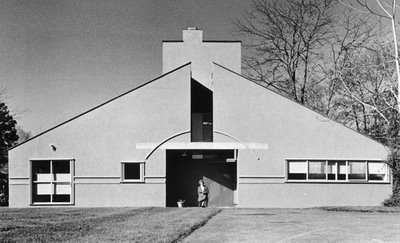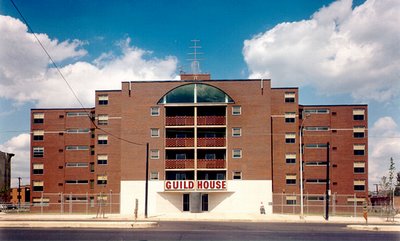 [image: New York Times]
[image: New York Times] in my office, a block from Ground Zero, with the constant drone of bagpipes echoing up from the memorial ceremonies below, I couldn't help but reflect on the terror attacks that so changed the world five years ago. Yet perhaps due to the weather -- so, so eerily reminiscent of that crisp fall morning in 2001 -- I began to ponder that maybe things
haven't really changed that much. I started to think about accountability, and about how everything that has spun out of control since the Trade Center fell -- Afghanistan, Iraq, Abu Ghraib, Guantanamo, countless terror attacks around the globe -- can in a certain sense be traced back to a crisis of accountability. And then of course I saw this image of the ground zero site as it exists tonight, still a gaping hole in the city, such a fitting metaphor for the failures and missed opportunities of these last five years.
I often write of the architect's ethical imperative to design responsibly in a world of increasing irresponsibility. The stakes are even higher now, believe it or not, than they were five years ago, and it's pretty clear that architecture is ever more implicated. If we assume that every building imagines a better city (and, by extension, that every city imagines a better world), then what does the above image have to say about our future? Do we accept this status quo? Or do we insist it changes?
On that note (sort of), for those of you in Arizona, Delaware, Washington DC, Maryland, Minnesota, New Hampshire, New York, Rhode Island, Vermont, or Wisconsin, don't forget that tomorrow (Sept. 12) is primary day. It's important. As a New Yorker, I'll be using the primary as an opportunity to make a statement, to demand a measure of accountability that seems to have vanished. Of course there is no chance of unseating the all-powerful Senator Clinton -- and, indeed, I'm not so sure that our long-term interests would be best served by replacing her with
Jonathan Tasini, her under-qualified, anti-war challenger for the Democratic nomination. But a vote for Tasini offers a chance -- if admittedly futile -- to make a simple statement in protest of a legislator who made the wrong choice in supporting a very wrong war. [The previous two sentences reveal the constant debate between my inner pragmatist and inner idealist. I apologize.] A wise man once told me that democracy is not a spectator sport; voting is not a privelege, but a responsibility. It is our duty as citizens to make known such grievances to our elected representatives, and I can't imagine a better way for Mrs. Clinton to understand the gravity of her misguided support of Bush's war than to see her supposed invincibility diminish by a few percentage points in tomorrow's primary. See you at the polls!
PR









